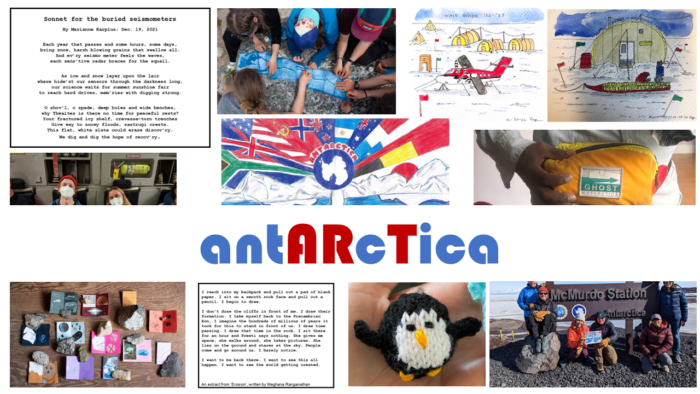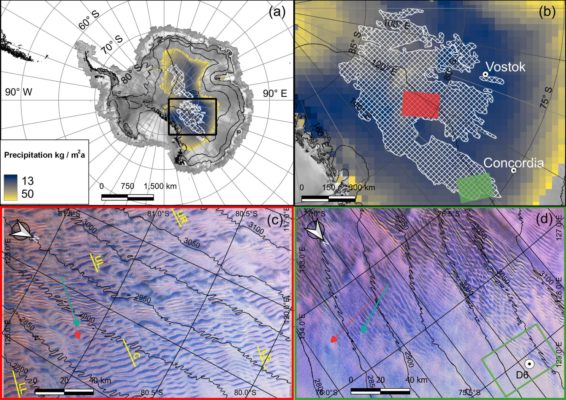Antarctica is a unique place where history, adventure, and science collide. It’s a continent that has fascinated explorers for centuries, but much of its story has been told through the lens of men who have ventured into its icy expanse. Natalie Hewit, a documentary filmmaker with a love for the polar continent, is changing that. Through her films, she brings Antarctica’s past and present to life, ...[Read More]
Uncovering Antarctica’s hidden subglacial lake network with satellite altimetry

Measuring ice surface elevation changes with satellite laser altimeters flying hundreds of kilometres above Earth tells us where the Antarctic and Greenland ice sheets are thinning or thickening and how much they contribute to sea level rise. Beyond that though, it can also reveal hidden activity of subglacial lakes filling and draining beneath the ice and meltwater rivers flowing ou ...[Read More]
Did you know? Machine learning can help us understand the cryosphere!

Recently, Machine Learning (ML) has emerged as a powerful tool within cryospheric sciences, offering innovative and effective solutions for observing, modelling and understanding the frozen regions of the Earth. From learning snowfall patterns and predicting avalanche dynamics to speeding up the process of modelling ice sheets, ML has transformed cryospheric sciences and bears many o ...[Read More]
Cryobook review: The Quickening
Even before its publication, my partner stumbled over the book The Quickening by Elizabeth Rush on Twitter and send it to me. In this book, Rush describes her journey to Thwaites Glacier and – as I was very curious about it – I bought it immediately after its release. It is not only documentary work about the journey, but also a meditation on responsibility, motherhood and life in a world of chang ...[Read More]
Blue ice in Antarctica: small extent, big science
Kggk kggk kggk – the sound of crampons accompanies me. A thin layer of snow covers the slippery ice while I pull a sled. As I wipe my hand over the snow, underneath, a blue color glitters in the sun (Figure 2). In the last days it has been snowing in the White Desert (Antarctica). All blue ice we could see before is temporarily covered by a thin blanket, perfect to pull a sled. However, this snow ...[Read More]
Antarctica Uncovered: Exploring the Exposed Surfaces Around the Melting Continent

In 2020, ocean scientists discovered a new island off the Pine Island Glacier ice shelf, naming it after the Norse goddess, Sif. The island is one of many new regions being exposed in the wake of increased ice shelf melting and glacial retreat. While these newly-revealed lands have been discussed in the Arctic and alpine ecosystems, the uncovered island and coastlines of Antarctica have been less ...[Read More]
antARcTica
In the frozen expanse of Antarctica, where the remote environment tests the limits of scientists, a unique relationship between science and art can emerge. As the isolation, weather and beauty of the ice-covered continent introduce themselves, some Antarctic individuals find solace in the realm of art. In this blog post, we delve into the interplay between the world of scientific exploration and t ...[Read More]
An inclusive field team is a great field team: Strategies and resources
Fieldwork is essential to polar sciences, but who are the people that actually do the fieldwork these days? A great field team includes people spanning a diversity of scientific skills, but at the same time, a diversity of cultures, backgrounds, and identities also adds intrinsic value to team dynamics and the overall field work experience. As part of the International Thwaites Glacier Collaborati ...[Read More]
Did you know about Antarctic snow megadunes?
When we think of dunes our thoughts automatically go to deserts and sand. But on Earth, as well as on other celestial bodies of the solar system, dunes exist also in a completely different environment. I am talking about gigantic dunes consisting of snow. On Earth they are called megadunes and you can find them only in East Antarctica, where they extend for thousands of km. If you want to know mor ...[Read More]
For Dummies: Radar altimetry for measuring ice sheet elevation changes
Does measuring the surface of the ice sheets provide more than superficial knowledge of their current status? Read further to find out why the answer is definitely yes! Measuring surface elevation changes actually tells us where Greenland and Antarctica are thinning or thickening and how much they contribute to sea level rise. Scientists have been doing this for the past three decades, so keep on ...[Read More]







